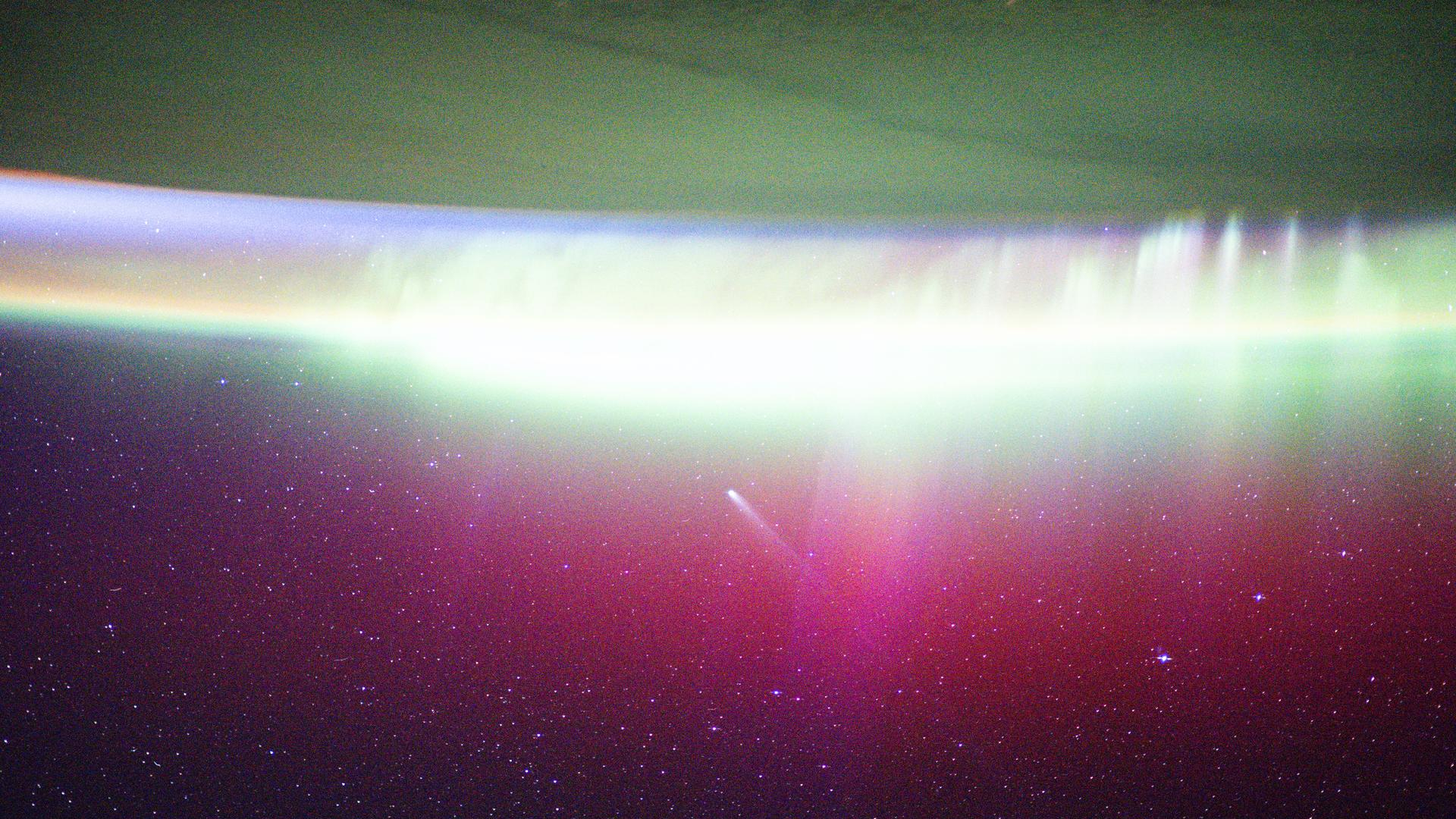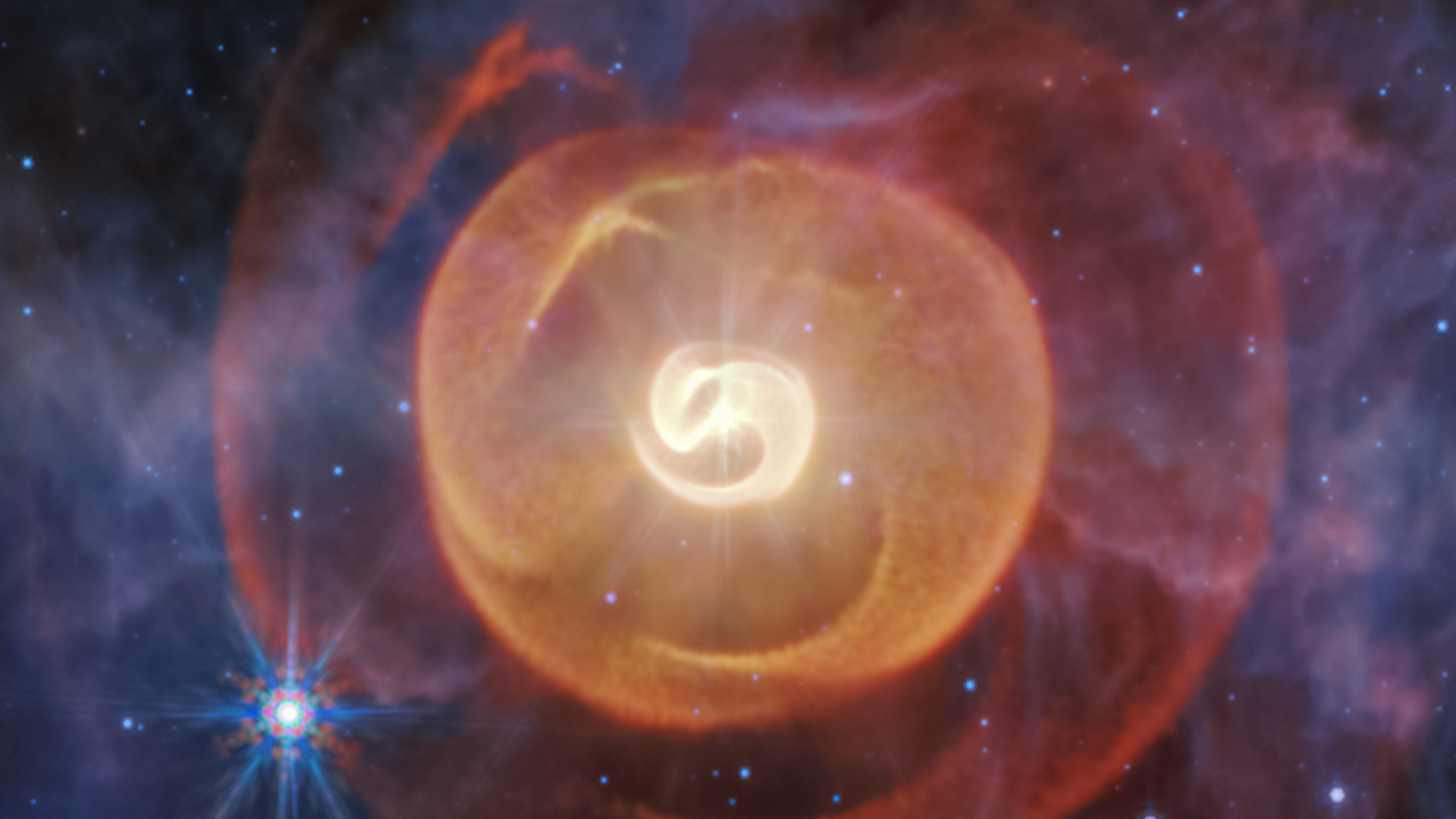ISS astronauts see comet Lemmon 'absorbed' by aurora | Space photo of the day for Nov. 20, 2025
It's not every day you see both a comet and an aurora from low Earth orbit.

For skywatchers, scientists and even the astronauts on the International Space Station (ISS), the skies have recently been very active. The sun has released its largest eruptions of 2025, sparking a series of auroras that, in the Northern Hemisphere, have reached as far south as Mexico.
Add to this two comets that have been seen in the night sky, comet Swan and comet Lemmon. While the astronauts on the ISS had to take shelter during the recent solar storms to avoid potentially dangerous radiation, they did manage to capture this image of comet Lemmon appearing near the auroras on Earth.
What is it?
Comet Lemmon, officially designated C/2012 F6 (Lemmon), is a long-period comet discovered in 2012 by the Mount Lemmon Survey in Arizona. It originates from the distant Oort Cloud, the icy reservoir of cometary bodies that surrounds our solar system.
As it approaches the sun during its 1,350-year orbit, comet Lemmon warms, releasing gas and dust that form its signature glowing tail.
Where is it?
This image was taken in low Earth orbit aboard the International Space Station, which circles our planet at an average altitude of about 250 miles (400 kilometers).
Why is it amazing?
Because of their long orbits, comets are a relatively rare sight in the night sky. And catching one juxtaposed against powerful auroras is rarer still.
This photo is a good reminder of how dynamic, multi-layered and interconnected our corner of the universe really is, and how once in a while, things line up just right to capture something truly extraordinary.
Breaking space news, the latest updates on rocket launches, skywatching events and more!
Want to learn more?
You can learn more about comet Lemmon and space weather.
Kenna Hughes-Castleberry is the Content Manager at Space.com. Formerly, she was the Science Communicator at JILA, a physics research institute. Kenna is also a freelance science journalist. Her beats include quantum technology, AI, animal intelligence, corvids, and cephalopods.
You must confirm your public display name before commenting
Please logout and then login again, you will then be prompted to enter your display name.

